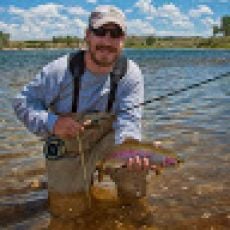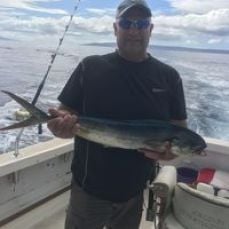Исламорада Ужение на муху (нахлыст) Рыбалка Рыбалка
Исламорада Ужение на муху (нахлыст) Рыбалка Рыбалка
Лучшая Ужение на муху (нахлыст) рыбалка – Исламорада
Лучшая Ужение на муху (нахлыст) рыбалка – Исламорада
Ужение на муху (нахлыст) Рыбалка – Исламорада
Ужение на муху (нахлыст) Рыбалка – Исламорада
Blessed with the plentiful waters of the Florida Bay, the Atlantic, and the Gulf at its doorstep, Islamorada is a place where the wildest angling dreams come true. Anglers from all over the globe flock there every year, and Islamorada fly fishing is one of the major reasons. The area is known as one of the birthplaces of saltwater and backcountry fly fishing, and this sport is a huge part of the local fishermen's heritage. If you want to master your cast and learn new techniques, this is exactly what you'll get if you put your trust in an experienced Islamorada fly fishing guide.
What to Catch
Fly fishing in Islamorada is all about catching huge fish in skinny waters – this was the place of the Bonefish fly fishing world record for many years. Bonefish, also known as the “Gray Ghost,” average 6–12 pounds, although Bones bigger than 14 pounds are not a rare thing. Large, strong, quick, and clever, Bonefish are just one of the superstars of the Florida Grand Slam, along with Tarpon and Permit.
Juvenile Tarpon are usually 6–15 pounds, while adult specimens can grow to be over 200 pounds. Islamorada "Silver Kings" are famed for their airborne acrobatics, power, and stamina – there's nothing more challenging and rewarding than battling them. Ranging from 12–40 pounds, Permit are known as “The most difficult flats fish to catch on a fly,” thanks to their smarts, speed, pickiness, and strength.
In addition to flats fishing for the Grand Slam, Islamorada offers excellent backcountry fly fishing opportunities. Redfish and Snook are among the most sought-after backcountry species, though Jacks, Ladyfish, and Seatrout are also interesting to catch.
Where to Go
With miles of flats and the Everglades in its backyard, Islamorada will spoil you for choice when it comes to fly fishing hot spots. Tarpon are abundant on the flats, but you can also fish for juvenile Tarpon in the backcountry creeks.
Permit can be found in the deeper waters of the flats and banks when the tides are low, while they'll be feeding closer to the surface during high tides.
Bonefish can be found in the same areas as Permit, in addition to the Everglades National Park. Spreading over 1.5 million acres, this fly fishing paradise offers some of the best sight and fly fishing for Snook there is. Known for loving any kinds of structure, mangrove ponds and grassy flats of the Everglades are their promised land. Redfish are also abundant in these waters, as well as in both saltwater flats and freshwater creeks – when spawning, huge schools can be found in these areas.
How to Fish
- To battle Tarpon most successfully, you'll usually need heavier tackle (at least a 10 wt rod) compared to other species. Use a 12 wt rod when catching bigger specimens and when fishing in windy conditions. Clear sink tip lines and fluorocarbon leaders are a must. When it comes to the flies, it's all about the variety of color and weight. Bait fish and toad patterns tied in a married or splayed tail are always a good choice. Go for 1/0 hooks for clear waters and 3/0 hooks when the waters are not clear enough.
- Bonefish are known for being spooky, so casting from the side rather than over them is the key. You'll be using lighter gear compared to Tarpon – an 8–9 wt rod will do the trick. Fluorocarbon leaders and floating or clear floating lines are the way to go. Bones are pretty picky when it comes to flies, so the presentation must be outstanding. Shrimp, toad, crabs, and bait fish patterns work well, in sizes #1–#4. Color and weight are also very important – make sure to have various weighted flies to match various depths these magnificent fish can be found in.
- Precision and presentation are essential when it comes to Permit. A 9 wt rod with a floating or clear floating line will usually have you covered – use a 10 wt rod in windy conditions. Fluorocarbon leaders are what you need, as well as various crab, shrimp, toad, and bait fish patterns (sizes #1–#2), especially Merkins, Velcro Crabs, and Clouser Minnows.
- The best gear for landing Snook is an 8–9 wt rod paired with fluorocarbon leaders and a floating or clear floating line, although a clear sink tip can sometimes be more efficient. Go for 1/0 or 2/0 hooks and toad, bait fish, and popper patterns.
- While the Grand Slam species can be a challenge even for fly fishing veterans, catching Redfish on the fly can be great for both novices and experts. Floating and clear floating lines with 7–9 wt rods are a default option, along with fluorocarbon leaders. Redfish react well to a variety of patterns, from streamers and crabs to poppers. Weedless fly patterns are sometimes a must in weedy areas.
When to Go
All of these majestic species can be caught year-round, but there are times of the year when specific fish are more abundant than others. Tarpon peak in April and May during their migration season, but can be caught anytime when the water temperatures go above 70 degrees. If you've set your mind to land the biggest of Bones, visit Islamorada in early spring and fall, though late spring and summer are when they're the most abundant. Spring and fall are the best times for Permit, while Snook fishing is the best at the beginning of fall through late spring. If you're after Reds, fall is your season.
Regardless of the time of the year and the targeted species, Islamorada fly fishing is bound to be a life-changing experience. Head to its rich flats and backcountry secret spots – the sky's the limit in these legendary waters.
Исламорада
4.7
/
5
На основе 28,687 отзывов клиентов FishingBooker















